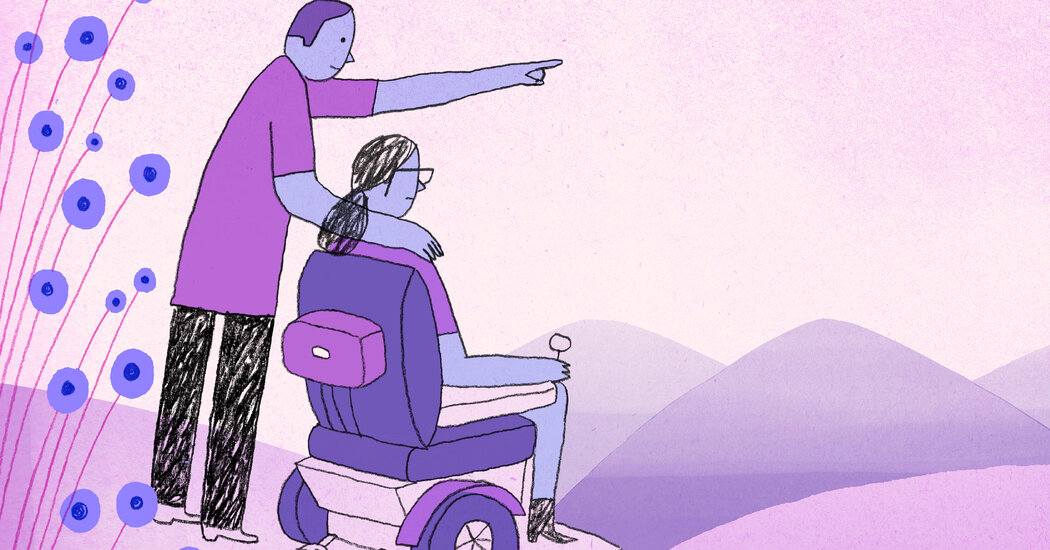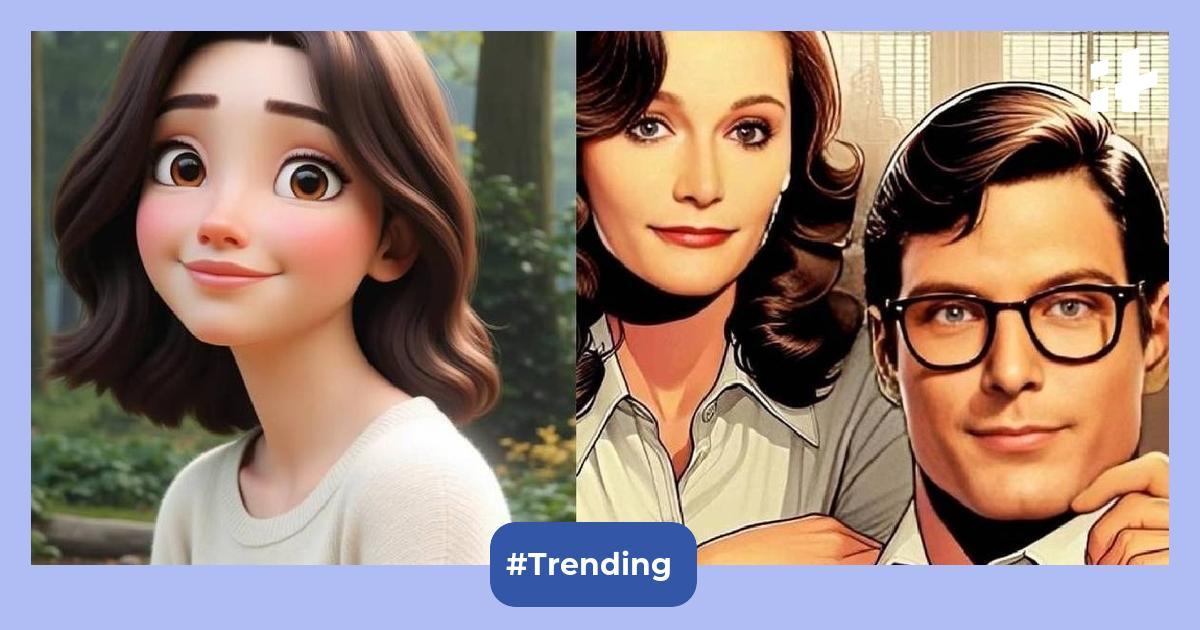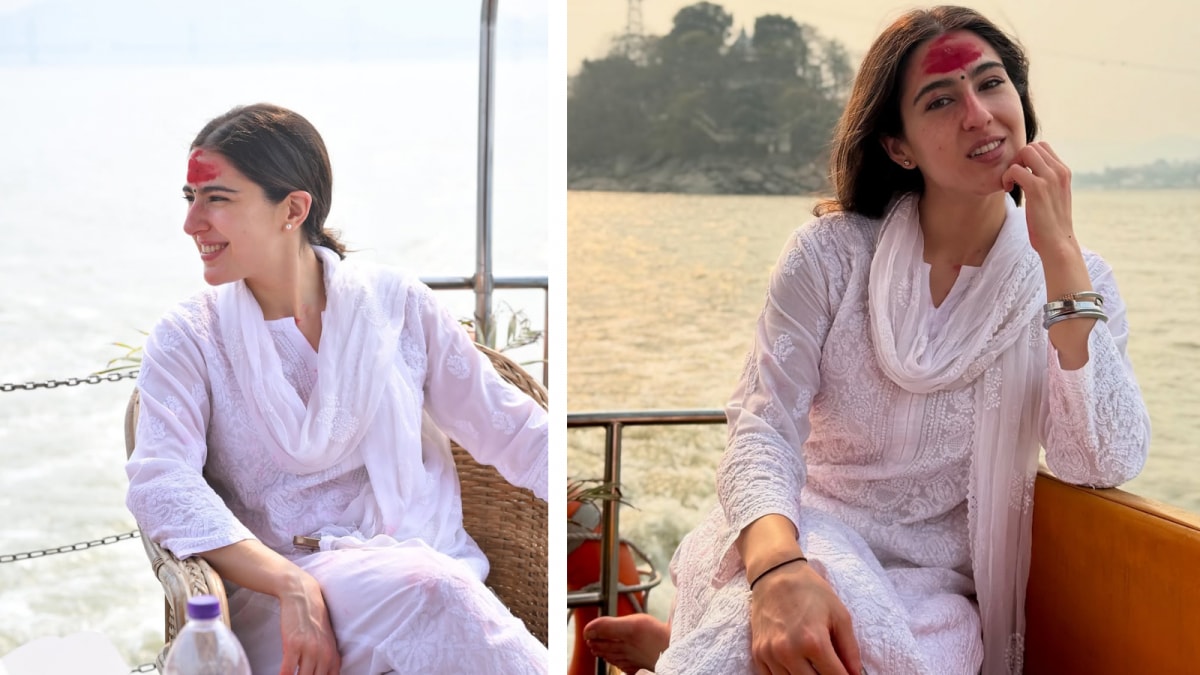
Why I Lied About Being Married
When we called my parents to tell them we were engaged, my father said to my mother, “Is she pregnant?”
I was 41, so this was a reasonable question. But I wasn’t pregnant. I was dying.
Troy and I got engaged one month before I received a terminal diagnosis. Getting engaged was not a hasty decision; we had been together for eight years and living together for seven. We had talked about getting married over the years, but we each had our own reasons not to.
For me, as a woman who is bisexual, marrying a man felt like giving up part of my queer identity. Troy had long decided that marriage wasn’t for him, after his parents’ terrible divorce. And since we had chosen not to have children, it didn’t seem important.
Being married would have been good for me professionally. I am a Quaker pastor, and it can make congregations anxious to consider hiring an unmarried pastor. But for us, that didn’t seem like a good enough reason.
A series of health crises made us change our minds.
Shortly after we moved from Atlanta to our new house in North Carolina, I knew something was wrong. I was on a walk in our neighborhood when a car came speeding down the road. I tried to get out of the way but couldn’t run; my muscles felt like they were being jerked around on marionette strings. I used to run half marathons, so this was disconcerting.
Over the next two years, I saw endless specialists. Sports doctors and physical therapists prescribed medication for my aching hips and frowned when I couldn’t stand on tiptoes or go down stairs. They drew blood for DNA tests, and I had four M.R.I.s and an EMG that ended abruptly when I had a panic attack.
All of this was painful, expensive and pointing to one conclusion: I had A.L.S.
Then one morning, Troy said he needed to go to the hospital. His blood pressure had spiked, and he felt dizzy. He said, “I’m afraid I might be having a stroke.”
I dropped him off at the emergency entrance, and by the time I returned from parking, they had already taken him into an examination room.
Without hesitation, I lied to the woman at the front desk. “My husband is back there,” I said, “and I need to be with him.”
When I got to his room, he had tubes connected to him in all directions. A nurse was about to insert an IV, and Troy said, “Don’t look — they’re sticking me,” because I have a lifelong fear of needles.
The nurse looked up in surprise and said, “He’s trying to protect you while he’s going through this!”
“That’s what we do,” I said.
After they rolled him away for a CT scan, I burst into tears. A nurse brought me a box of tissues. “We see this every day,” she said. “It’s easy to forget how hard it can be.”
“Oh, I do too,” I said. “I’m in and out of I.C.U.s for my job. But it’s different when it’s your person.”
I called a friend, Deborah, another Quaker pastor, and told her where we were. She asked if I wanted her to come to the E.R., and I said yes.
E.R. staff came in and out, asking me questions. Some I could answer and some I could not. It made me anxious that they might know we were not married. I didn’t know what medication Troy had taken that day or the dosages. I signed documents as the next-of-kin even though I wasn’t.
By the time Deborah arrived, Troy was back in the room with me. The initial tests had come back favorably, and they were keeping an eye on him before sending us home.
I told Deborah that I had lied to the person at the front desk, and she understood, even though as Quakers we value speaking the truth.
“I would have done the same thing,” she said.
After a long, terrifying day, we went home. The doctors reassured us that we had done the right thing by coming in, and they would adjust Troy’s blood pressure medication.
I never wanted to be in that position again. We needed to have access to each other and be able to make medical decisions for the other, so we decided to get married.
Depending on who you ask, this is either the most romantic story or the least.
One month later, my doctor confirmed that I had A.L.S. We had been holding out hope that it was multiple sclerosis, which is debilitating but treatable. A.L.S., or Lou Gehrig’s disease, is always fatal, and the average life expectancy is two to five years. Over time, my muscles would atrophy until I could no longer swallow or breathe.
The day we got the news was the worst of our lives, and the next month wasn’t much better. There was so much to do — new medications and trying to get into a nearby A.L.S. clinic, calling our loved ones and weeping over the phone with them. I wrote my advanced medical directive and planned my own memorial, asking Deborah to officiate.
That fall, we were married in a traditional Quaker service. Friends and family traveled from all over the world to celebrate with us. My family came from Alaska and Troy’s from the Czech Republic, and one of my best friends flew more than 24 hours from Singapore. No one wanted to miss this wedding.
For three days, our house was filled with laughter and good food. I got around with a cane but mostly stayed in a chair on our deck while loved ones came and sat next to me and shared stories.
The day of the wedding, I put on the white dress I had made for myself, and Troy and I drove to the Quaker meetinghouse. In the Quaker tradition, there is no wedding officiant. We believe that God joins the couple in marriage and the community is witness to this union.
Our friends and family gathered in the meetinghouse and sat in silent Quaker worship. Troy and I said our vows in the silence, and my sister sang “One Hand, One Heart” from “West Side Story.” Friends and family rose to speak. A friend of mine from seminary declared, “Ashley cannot be tamed!” Our families talked about how long they had waited for this day, and how happy my niece and nephew were that Troy was now Uncle Troy.
Person after person talked about me and the influence I’d had on their lives. No one spoke directly about my diagnosis, but we all knew that this was a glimpse into what my memorial would be like. Troy and I laughed and cried as our community affirmed our love and their commitment to support us.
Afterward, everyone signed the beautiful marriage certificate that we would frame and display in our home. And then we all went back to our house to eat and drink and continue the celebration. My brother put on a playlist he had made for the occasion, and we ate almond-flavored wedding cake.
The next day, we left for our honeymoon, a week on the North Carolina coast. After all the excitement, it was a relief to sit quietly and watch the water. We saw dolphins and snowy egrets and fish jumping in front of us. On the last day, we packed up and drove away just before a hurricane hit.
In the weeks that followed, Troy and I were surprised by how happy being married made us. We thought it didn’t matter, but it did. And as my health has continued to decline, the commitment we made to each other has helped us through difficult times.
No one knows how much time I have left, but it’s probably no more than a year or two. I have gone from using a cane to a walker to a motorized wheelchair. I need Troy’s help to dress, bathe and use the bathroom. I am thankful for his patience and good humor as we navigate this.
Despite everything, our life is beautiful. We spend long hours on our back deck, pointing out the different birds: blue jays, cardinals, robins, hawks and brown thrashers. We eat delicious meals. After dinner, we watch the stars.
Friends and family come to visit, and we welcome them, giving them good food and cocktails and laughter. Having a terminal diagnosis is challenging but also clarifying. I want to spend as much time as I can with the people I love.
People say that marriage is hard. Maybe, for many, this is true. For me, though, being married to Troy is the easiest thing in my life.









